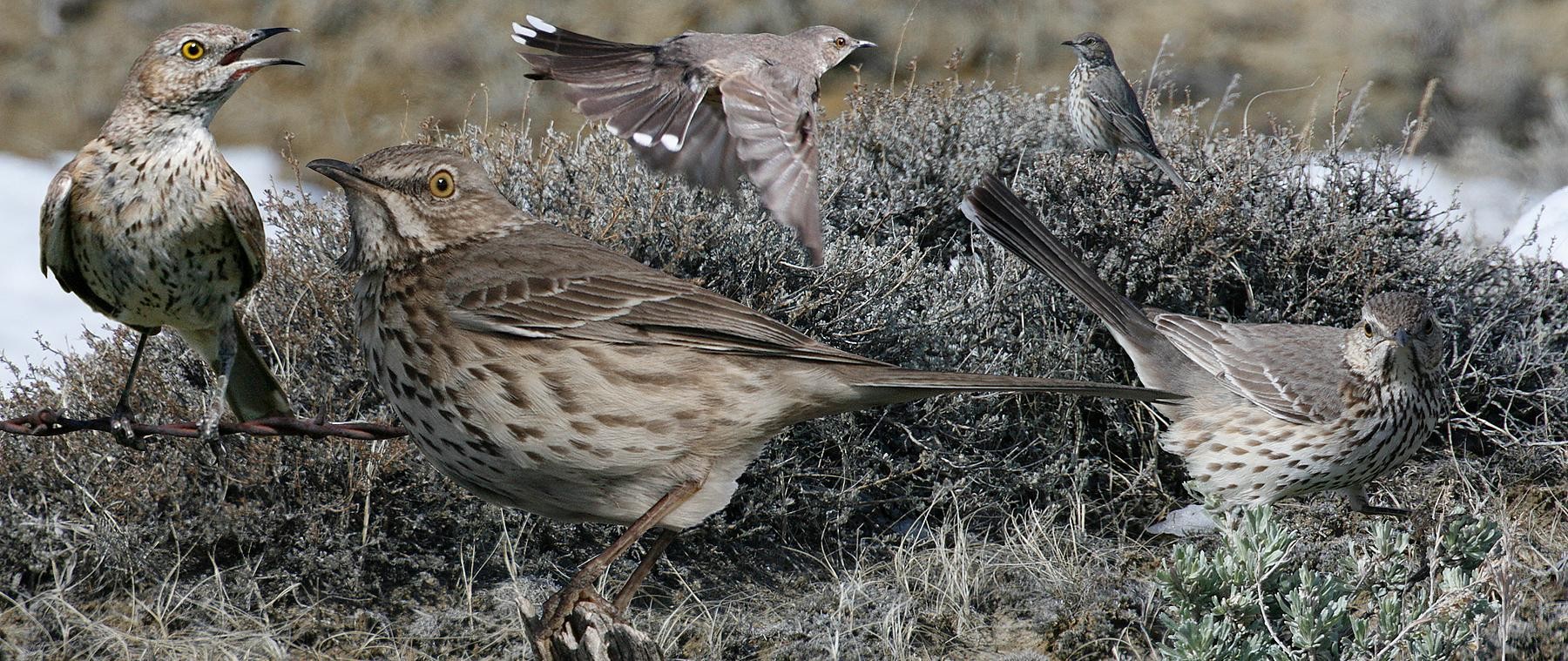Sage Thrasher
A species of Sage Thrashers Scientific name : Oreoscoptes montanus Genus : Sage Thrashers
Sage Thrasher, A species of Sage Thrashers
Botanical name: Oreoscoptes montanus
Genus: Sage Thrashers
Content
Description General Info
 Photo By Richard Crossley , used under CC-BY-SA-3.0 /Cropped and compressed from original
Photo By Richard Crossley , used under CC-BY-SA-3.0 /Cropped and compressed from original Description
Oreoscoptes montanus are pale grey-brown on the upperparts and white with dark streaks on the underparts. They have a slim straight relatively short bill, yellow eyes and a long tail, although not as long as that of other thrashers. Measurements: Length: 7.9-9.1 in (20-23 cm) Weight: 1.4-1.8 oz (40-50 g) Wingspan: 12.6 in (32 cm) 
Size
22 cm (8.5 in)
Life Expectancy
13 years
Nest Placement
Shrub
Clutch Size
4 - 5 eggs
Incubation Period
1 - 2 broods
Number of Broods
11 - 17 days
Nestling Period
8 - 14 days
Feeding Habits
Sage Thrasher's diet is dominated by terrestrial insects including ants, grasshoppers, and ground beetles, complemented by other arthropods and a small amount of plant material like berries and grapes. They primarily capture prey by running on the ground, and forage alone or in small post-breeding groups.
Habitat
The sage Thrasher is commonly found in shrubsteppe habitats of the interior West, characterized by open, dry landscapes where trees are scarce, and big sagebrush dominates. Preferring denser cover for concealment alongside bare patches for foraging, this bird thrives at various altitudes in conditions favoring sagebrush and minimal grasses. During winter or migration, sage Thrasher is found in arid/semiarid regions, utilizing open grasslands and scattered bush areas, including pinyon-juniper woodlands.
Nest Behavior
Both sexes of sage Thrasher construct the nest, which occurs in tall sagebrush. Nesting involves laying eggs in a well-concealed nest cup, with meticulous parental care ensuring the protection and development of the young.
Nest Characteristics
Sage Thrasher's nest is usually on or near ground in big sagebrush with wide crowns, often under the densest part for shade or predator cover. Bulky twig nests are accentuated by grass, rootlets, or hair linings, measuring 4 inches tall, 8 inches across, with a 1.8 to 3.2 inches deep cup.
Dite type
Insectivorous
General Info
Feeding Habits
Bird food type
Bird Feeder Type

Ground
Behavior
Sage Thrasher exhibit a blend of secretive behaviors, particularly during breeding. They run covertly on the ground, avoiding flight unless necessary. When establishing territory, males perform aerial displays and bilateral wing fluttering while singing. These birds sing for mate attraction and territorial demarcation, often engaging in call-and-response with adjacent males. Both sexes share nesting responsibilities, such as feeding the chicks and maintaining nest cleanliness. Outside breeding season, sage Thrasher display social tendencies, forming large flocks indicating a communal aspect to their lifestyle.
Species Status
These birds have declined in some areas where sagebrush has been removed but are still common where suitable habitat remains. The continued decline of sagebrush habitats in western North America is cause for alarm for this and other sagebrush dependent species. 
Scientific Classification
Phylum
Chordates Class
Birds Order
Perching birds Family
Mimids Genus
Sage Thrashers Species
Sage Thrasher